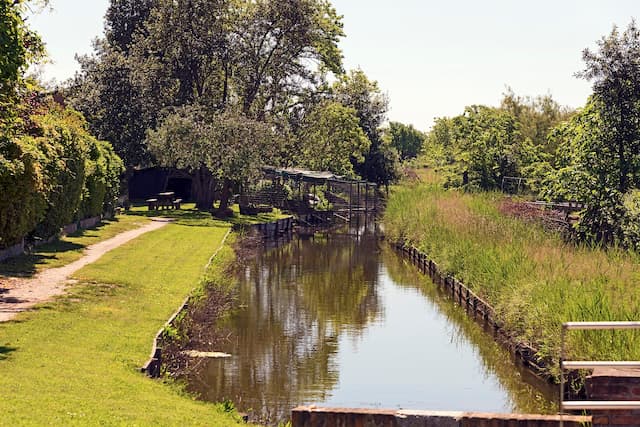When one thinks of Venice, the picturesque canals, elegant gondolas, and magnificent palaces immediately come to mind. However, few know that the history of Venice is deeply intertwined with agriculture, particularly on the island of Sant’Erasmo. In this article, we will explore the location and history of these islands, the importance of Venetian agriculture in the past and present, and the
special connection Venetians have with their local products such as violet artichokes and salicornia.
The Location and History of Sant’Erasmo
Sant’Erasmo is an island in the Venetian lagoon, located northeast of the city’s historic center. This island, often referred to as the “garden of Venice,” is one of the largest in the lagoon and has a long history of human settlement and agricultural activity. Over the centuries, Sant’Erasmo has been a vital source of agricultural products for Venetians, thanks to its fertile soil and availability of fresh water.
Since the early settlements, the island of Sant’Erasmo has been fundamental for Venetian agriculture. During the Middle Ages, it was common to find cultivated fields and vegetable gardens on many of the lagoon islands. However, with the urban expansion and economic growth of Venice, many of these agricultural areas were urbanized, transforming the landscape and drastically reducing the space dedicated to agriculture. (OpenLibHums)
A Brief Historical Overview
Since the earliest settlements, the island of Sant’Erasmo has been fundamental for Venetian agriculture. During the Middle Ages, it was common to find cultivated fields and gardens on many of the lagoon’s islands. However, with urban expansion and the economic growth of Venice, many of these agricultural areas have been urbanized, transforming the landscape and drastically reducing the space dedicated to agriculture.
Venetian Agriculture Today
Today, Sant’Erasmo remains one of the last bastions of agriculture in the Venetian lagoon. Although
the scale of agricultural activities has diminished compared to the past, the island continues to produce some of the region’s most prized and appreciated products. This persistence is due to the unique quality of the vegetables grown in salty soils, which some believe gives them a special and distinctive flavor.
The Violet Artichoke of Sant’Erasmo
One of Sant’Erasmo’s most famous products is the violet artichoke, also known as “castraura.” This artichoke is particularly appreciated not only in Venice but also in other parts of the world, thanks to the export efforts of local companies like Cipriani. Growing artichokes in salty soil is a significant challenge, but the results speak for themselves: an artichoke with an intense and unique flavor that has become a true symbol of Venetian gastronomy. (www.visitvenezia.eu/) (Compass & Pine).

Salicornia
In addition to the violet artichoke, Sant’Erasmo is famous for salicornia, also known as wild asparagus. This plant grows spontaneously on the island and is highly sought after for its distinctive flavor and crunchy texture. Salicornia has become very fashionable recently and is used in many innovative recipes. The local belief is that vegetables grown on brackish soils are tastier, although there is no scientific evidence to support this theory. What is undeniable, however, is the difficulty of working in fields on soil rooted in brackish waters.
Orto di Venezia: A Unique Wine
Another remarkable product of Sant’Erasmo is the “Orto di Venezia” wine, produced by a French winemaker. This wine is one of the very few wines produced in Venice and represents the only commercially available wine from Sant’Erasmo. Wine production on the island is a testament to the esilience and adaptability of local farmers, who continue to cultivate on challenging soils and keep Venetian winemaking traditions alive. (OpenLibHums) (Beescover)

Conclusion
In conclusion, the island of Sant’Erasmo and Venetian agriculture represent a frequently overlooked but essential aspect of Venice’s history and culture. From violet artichokes to salicornia, to the Orto di Venezia wine, these products not only enrich the table but also tell the story of a land and its people. Although agriculture in Venice has declined over time, local traditions and products continue
to thrive, offering an authentic culinary experience to visitors and residents alike. For example, when you visit Venice, taking part in a cooking class that uses local ingredients from Sant’Erasmo can offer you a unique perspective on Venetian cuisine and an authentic culinary experience. This way, you not only taste the flavors of the lagoon but also support the agricultural traditions that make this city so special. You can book one of these classes on the CucinaSerenissima website, where we offer engaging and authentic culinary experiences.
For further reading and detailed information, you can visit these sources:

